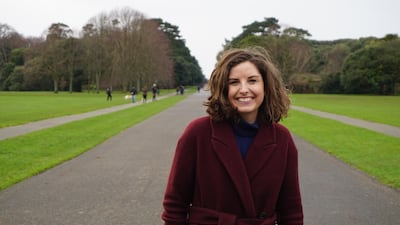After losing yet another hour of my “bedbound” day wandering aimlessly through YouTube’s more obscure corners, it is hard not to feel like my life has become rather small.
Whether I’ve lost any real tangible amount of weight, my presence in this world feels less weighty.
I’ve had a chronic illness for 12 years but the past few months have been the worst to date, leaving me off work, largely house-bound and watching far too many heckin doggo videos.
This period of illness has come roughly sandwiched between two debates; housing for artists and adequate pay and employment for theatre actors - the current debate with particular reference to the Abbey Theatre.
In August of last year, I wrote a piece on the topic of access to housing for Irish artists. As someone unable to access the rental market as a result of my disability, I could empathise with struggles of Irish artists trying to carve out a livelihood while remaining dedicated to their craft. Inevitably, many readers viewed this debate in very unsympathetic terms and this was reflected in the accompanying comments. If these responses were anything to go by, now would be the time to proclaim once more "romantic Ireland is dead and gone!".
But I’m not entirely convinced.
Distinct pride
Irish people have always drawn a distinct pride from our art, music and literature. As a nation that has always struggled to articulate what it means to be "Irish", our arts scene has provided one of the most tangible reference points in defining this identity, or at least how we would like to be identified. We are after all, "the land of saints and scholars". Yet I would go further and say that art forms an essential part of the human identity. Art is intrinsic to all humans. And by art, we don't just mean highbrow culture. For some it's the Abbey Theatre; for others, it's Damo Dempsey in Vicar Street, or everything in between. But whether it is theatre or music, film or spoken word, one would struggle to find someone for whom art is not important.
But art does not live in a vacuum. The Irish arts scene is expected to survive, and even thrive with minimal support. In fact, Government investment in the arts is immediately viewed by many as a “nice to have” or even an overly indulgent use of public finances. Sadly, we seem to be blind to the missing link.
Art means different things to us. JL Carr wrote “a story is coloured by what is presently happening to its writer”. Right now, I’m struggling. And so will this piece be coloured.
Like religion, a lot of us turn to art for comfort in times of hardship: breakups, bereavements, illness etc. Art is nourishing. An antidote to the ennui of illness. And so recently, I have turned to the healing power of art from my sickbed.

Illness can exile you into arena of loneliness. It is both time spent alone and an experienced that tends to be unshared by peers. For the first time in twenty-seven years, my confidence has knocked. My belief in myself has been rattled. And that in itself, is rattling.
Art has helped me to reassert my position in this world. From Emilie Pine to Oliver Jeffers to Dallas Clayton and @josie.doodles, hard-hitting and gently-embracing, giving inspiration back the meaning it lost to its Instagram hashtag.
Other times, it has allowed me to escape. The wet cloth melts away and medicine bottles fade and I'm on the couch with The High Low's Pandora and Dolly sipping Cremant and fighting over the last prawn sandwich.
I've found refuge in Olivia Laing's A Lonely City and Miranda July's lighter It Chooses You, stories of outsiders, loners, people with a story to tell, or at least who believe so.
And often times it’s less explicit. Sometimes a song just makes me feel better and that’s it.
Feel better
A lot of things have been making me feel better. If love could cure me, I’d never so much as sneeze again. The support of family, the company of friends, exercise, talk therapy. But sometimes all I want is to be held by that song. Where I’m not asked to perform or explain, to stretch or exert myself.
In times of hardship, art speaks to us because artists invest their vulnerability in their art. The artists vulnerability speaks to ours.
And vulnerability requires courage. In her Ted Talk, Brené Brown discusses this relationship between fear, courage and vulnerability; as humans, we fear that by displaying our vulnerability to others we risk losing their love and respect – to be seen requires courage.
Courage, a word whose origin stems from the from the Latin word cor, meaning heart, or the old French word corage meaning heart, innermost feelings; temper, is essential in the artistic process. There is no right or wrong in art, nor is there objective perfection. What is required is the courage to express imperfection wholeheartedly against this uncertainty and nil guarantee of triumph nor acceptation. Exceptionally difficult, the artist must believe in the worthiness of their art.
And so must we.
It is critical that we support artists who are displaying this courage, who are feeding into an essential well of art that nourishes us all by providing artists with adequate housing and paid employment opportunities.
Of course, the reach of art goes far beyond what I have detailed in this article. Art is also a huge opportunity for celebration, connection, debate, conversation, protest and far beyond. I’m speaking from one small angle, from a corner, from my experience.
Right now, I’m feeling a little smaller than usual and art is building me back up.
Brigid O’Dea is a writer and an aspiring children’s writer










